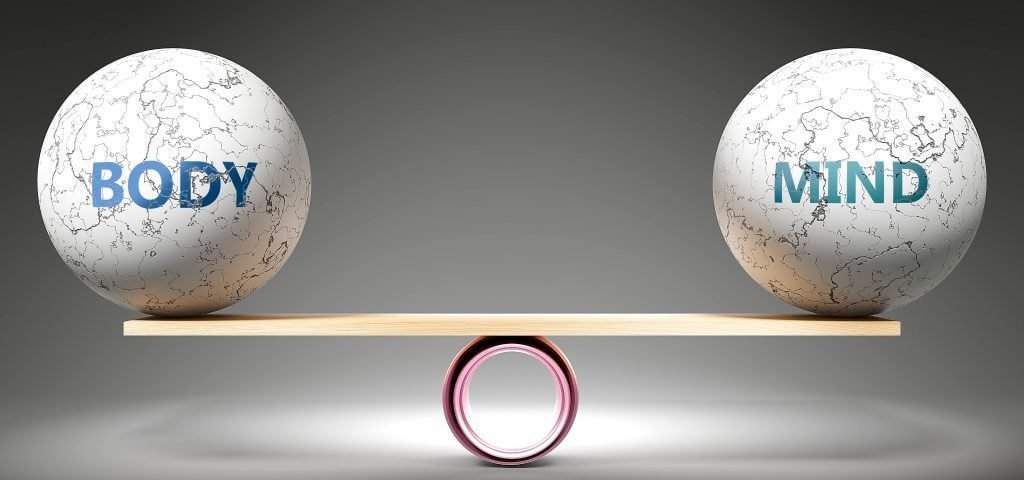Introduction
In today’s fast-paced world, where stress, anxiety, and various physical ailments seem to be on the rise, understanding the intricate connection between our physical health and mental well-being has become more critical than ever. The concept of the mind-body connection is not new, but recent scientific discoveries have shed new light on the fascinating relationship between the two. In this blog, we’ll delve into the science behind the mind-body connection, exploring how physical health and mental well-being are intertwined and how we can harness this knowledge to lead healthier, happier lives.
Mind and Body as Separate Entities
Throughout history, the Western world has often approached the mind and body as distinct entities. This dualistic perspective, rooted in the philosophies of ancient Greece and later refined by philosophers like René Descartes, viewed the mind and body as separate realms. The mind was associated with consciousness, emotions, and thoughts, while the body was seen as a complex machine governed by physical laws. This separation of mind and body had significant implications for how we understood and treated physical and mental health.
Emergence of the Mind-Body Connection
The 20th century marked a significant shift in our understanding of the mind-body connection. Pioneering research in various fields began to reveal the intricate ways in which our physical and mental states are interrelated. One of the key figures in this shift was Dr. Hans Selye, who introduced the concept of stress as a response to various physical and psychological factors. His work laid the foundation for understanding how stress impacts both our mental and physical health.
Understanding the Stress Response
Stress is one of the most potent examples of the mind-body connection in action. When we encounter a stressor, whether it’s a looming deadline at work or a close encounter with a dangerous animal, our body’s stress response system kicks in. This system, often referred to as the “fight or flight” response, involves the release of stress hormones like cortisol and adrenaline. These hormones prepare the body to face a threat or challenge by increasing heart rate, dilating airways, and redirecting blood flow to critical areas.
While this stress response is crucial for survival in acute situations, chronic stress can have severe consequences for both mental and physical health. High levels of cortisol, for example, have been linked to anxiety, depression, and cognitive impairments. Moreover, chronic stress can lead to a range of physical health issues, including cardiovascular disease, digestive problems, and weakened immune function.
Immune System and the Mind-Body Connection
The link between the immune system and mental health is another fascinating aspect of the mind-body connection. Researchers have discovered that the immune system and the brain communicate with each other through a complex network of chemicals and signaling molecules. This bidirectional communication means that our mental state can influence our immune system’s function, and vice versa.
For example, studies have shown that stress and negative emotions can weaken the immune system’s response to infections and illnesses. Conversely, a strong immune system can protect the brain from inflammation and oxidative stress, which have been implicated in conditions like Alzheimer’s disease and depression.
How Thoughts Change the Brain
The field of neuroscience has revealed that our thoughts and experiences can physically alter our brain’s structure and function, a phenomenon known as neuroplasticity. This means that our mental and emotional experiences can reshape the physical organ that is our brain.
Positive thoughts, mindfulness, and cognitive-behavioral therapy have been shown to promote neuroplasticity, leading to increased brain resilience and emotional well-being. On the other hand, chronic stress and negative thought patterns can lead to damaging changes in the brain, contributing to mental health disorders like anxiety and depression.
Gut-Brain Connection
One of the most exciting areas of research in the mind-body connection is the gut-brain axis. The gut, often referred to as the “second brain,” is home to a vast network of neurons and neurotransmitters. This gut-brain connection influences not only our digestion but also our mood and overall mental health.
The trillions of microorganisms that inhabit our gut, collectively known as the gut microbiome, play a vital role in this connection. Research has shown that the gut microbiome can influence mood, anxiety, and depression. An imbalance in gut bacteria, known as dysbiosis, has been linked to various mental health disorders. On the flip side, a healthy gut with a diverse microbiome can positively impact mental well-being.
Mind-Body Therapies and Their Efficacy
Understanding the mind-body connection has led to the development and widespread use of mind-body therapies. These therapies aim to harness the relationship between physical and mental health to promote overall well-being. Some of the most well-known mind-body therapies include yoga, meditation, acupuncture, and tai chi.
Yoga, for instance, combines physical postures with mindfulness and breath control, promoting relaxation and stress reduction. Meditation has been shown to positively impact brain structure and function, leading to improvements in mental health. Acupuncture, an ancient Chinese practice, is believed to restore the flow of vital energy, or “qi,” and has been used to alleviate pain and improve mental well-being. Tai chi combines movement and meditation to enhance balance, strength, and mental clarity.
Studies have demonstrated the effectiveness of these therapies in treating conditions such as anxiety, depression, chronic pain, and even post-traumatic stress disorder. The mind-body connection serves as the foundational principle behind their success, as they address the interconnectedness of physical and mental health.
Steps to Improve the Mind-Body Connection
Now that we’ve explored the science behind the mind-body connection, it’s essential to discuss practical steps individuals can take to improve their overall well-being by nurturing this relationship.
- Physical Activity: Regular exercise is one of the most potent ways to enhance the mind-body connection. Exercise releases endorphins, which are natural mood lifters, and can reduce stress hormones. It also promotes better sleep, which is essential for both mental and physical health.
- Healthy Diet: A balanced diet rich in fruits, vegetables, and whole grains can positively influence both physical and mental health. As mentioned earlier, the gut-brain connection emphasizes the importance of a healthy gut microbiome, which can be nurtured through a diet rich in fiber and fermented foods.
- Stress Management: Practicing stress-reduction techniques like meditation, yoga, and mindfulness can help regulate the stress response, leading to improved mental health. These techniques promote relaxation and emotional balance.
- Quality Sleep: Prioritizing good sleep hygiene is vital for the mind-body connection. Adequate sleep allows the brain and body to recover and repair, helping to prevent a range of physical and mental health issues.
- Social Connections: Building and maintaining social relationships is crucial for mental health. Social support can buffer the negative effects of stress and provide emotional well-being.
- Mindfulness and Cognitive-Behavioral Therapy: These approaches help individuals become more aware of their thoughts and feelings and provide strategies for managing negative thought patterns. They promote emotional resilience and well-being.
- Seeking Professional Help: If you’re struggling with mental health issues, don’t hesitate to seek professional help. Therapists, counselors, and psychiatrists can provide valuable guidance and treatments to address mental health concerns.
Conclusion
The science behind the mind-body connection is an ever-evolving field, shedding light on the profound ways in which our physical and mental health are intertwined. This understanding has transformed how we approach health and well-being, emphasizing the need for a holistic approach that considers both the body and the mind.
By taking proactive steps to nurture the mind-body connection through exercise, diet, stress management, and social support, individuals can lead healthier, happier lives. This knowledge empowers us to live more consciously, recognizing that our physical health profoundly impacts our mental well-being and vice versa. In doing so, we can embrace a more holistic approach to health and well-being, ultimately leading to a higher quality of life for ourselves and those around us.







1,855 responses
Thanks very interesting blog!
Your point of view caught my eye and was very interesting. Thanks. I have a question for you.
Adored this entry. It’s so well-researched and full of helpful insight. Many thanks for sharing such beneficial content.
Simply wish to say your article is as astounding. The clarity in your post is simply great and i
could assume you’re an expert on this subject.
Well with your permission allow me to grab your
feed to keep up to date with forthcoming post.
Thanks a million and please continue the enjoyable work.
This is amazing! Full of helpful insights and highly well-written. Thank you for offering this.